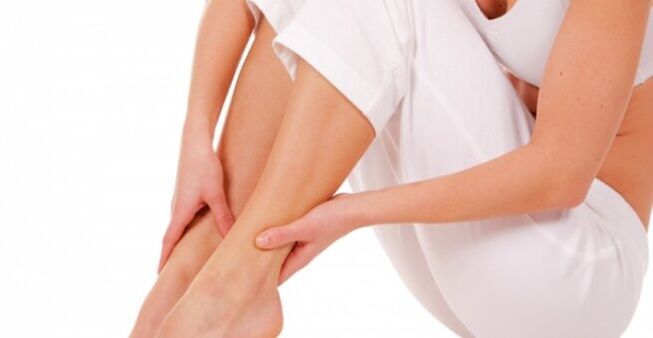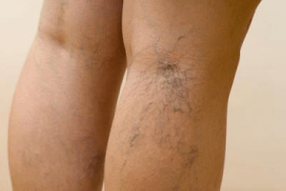Many people mistakenly believe that varicose veins are a threat to the appearance of the legs only. In fact, everything is more serious - the disease is very often complicated by thrombosis and inflammation of deep veins, and in advanced cases, chronic venous insufficiency, manifested by obvious trophic changes in the tissues. Therefore, it is necessary to diagnose in the early stages of this pathology to prevent the development of dangerous conditions.

Varicose veins are pathological changes that occur under the influence of blood that accumulates in the walls of venous vessels. This process often develops in the legs and small pelvic vessels. Normally, blood is directed only to the heart through the arteries, which is facilitated by the venous valves and muscles, which "move" blood through the arteries by narrowing them. Varicose veins cause abnormal blood flow for a number of reasons. It begins to stagnate, first in the deep veins, and then in the growing superficial veins, forming varicose veins under the skin.
Symptoms of varicose veins of the lower extremities
The first symptoms of this disease are nonspecific (also found in other diseases), they are combined under the term "severe foot syndrome". It is characterized by increased and progressive fatigue of the lower extremities, pain in the legs, a feeling of heaviness, burning and bursting in the legs, nocturnal cramps of the calf muscles. These symptoms appear at the end of the day, especially if a person is standing or sitting for long periods of time. Later, with the development of pathology, evening swelling of the back of the foot and ankle is added to the described manifestations of the disease. After rest, the condition of painful feet usually improves.
In the early stages of the disease, visual changes are not always noticeable, because varicose veins in the legs begin with deeper veins. The only external sign of an ongoing problem may be vascular networks. Of course, they do not always show varicose veins, but when they appear, it is better to consult a phlebologist, a specialist in vascular diseases.

However, in the later stages of varicose veins, cyanotic subcutaneous veins and varicose veins are already visible - they are dilated and curved superficial veins resembling grapes. They are usually located on the inside of the lower leg and thigh.
In addition, with the development of pathology, the legs begin to swell more. Gradually, chronic venous insufficiency develops, in which venous outflow and microcirculation in the tissues are disrupted. All this is reflected in the condition of the skin of the feet: it darkens, flakes, itching, and then trophic ulcers appear, very poorly healed. This is how varicose veins develop. A similar result of varicose veins can be prevented with timely treatment, so even if there is a slight but systemic discomfort in the legs and vascular networks or "stars" appear on the skin, you should consult a doctor.
Symptoms of pelvic varicose veins
Varicose veins in the pelvis are less common than in the legs and occur mainly in young women. Pregnancy is a trigger for the development of this pathology (both hormonal and mechanical contributing factors play a role). Symptoms of the disease usually disappear after childbirth, and only about 10% of women report periodic recurrence of unpleasant symptoms after prolonged standing, hypothermia and physical exertion.
Varicose veins of the small pelvis are manifested by chronic pelvic pain, as well as the expansion of superficial venous formations in the perineum and vulva. Such patients often fail to treat inflammatory diseases of the reproductive organs, because the pain in the abdomen, which is characteristic of pelvic varicose veins, sometimes mistakenly leads to chronic oophoritis, salpingitis, endometriosis, etc. associated with.
How are varicose veins diagnosed?
When varicose veins are clearly visible on the patient's legs, the doctor can diagnose "varicose veins" without the results of instrumental studies. If the pathology begins to develop or is localized in the small pelvis, in-depth examination is indispensable.

The main method of diagnosing varicose veins is Doppler ultrasound. This research is informative for damage to blood vessels in any part of the body. With the help of ultrasound, the doctor can study the condition and anatomy of deep and superficial vessels, the walls of the valves, assess the blood flow in the vessels, blood flow back, etc. The classification of varicose veins and, accordingly, the choice of treatment is based on the results of ultrasound examination.
Another diagnostic method used in this pathology is rheovasography. Its implementation allows you to determine how well the tissues of the lower extremities are filled with blood and nutrients. This information helps the doctor to determine the stage of the disease: in the compensatory stage, subcompensation, etc.
Less commonly, phlebography is used for varicose veins - an X-ray examination of the veins using contrast.
In addition, a thorough examination of patients with varicose veins usually involves various blood tests: doctors are particularly interested in hemoglobin, erythrocytes, platelet levels and coagulogram parameters. This information allows us to assess the density of blood and the tendency of blood clots to form in the patient's body.


















